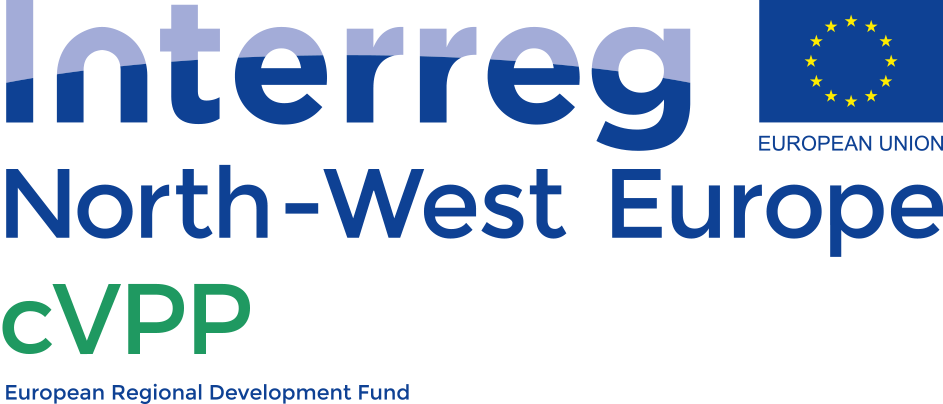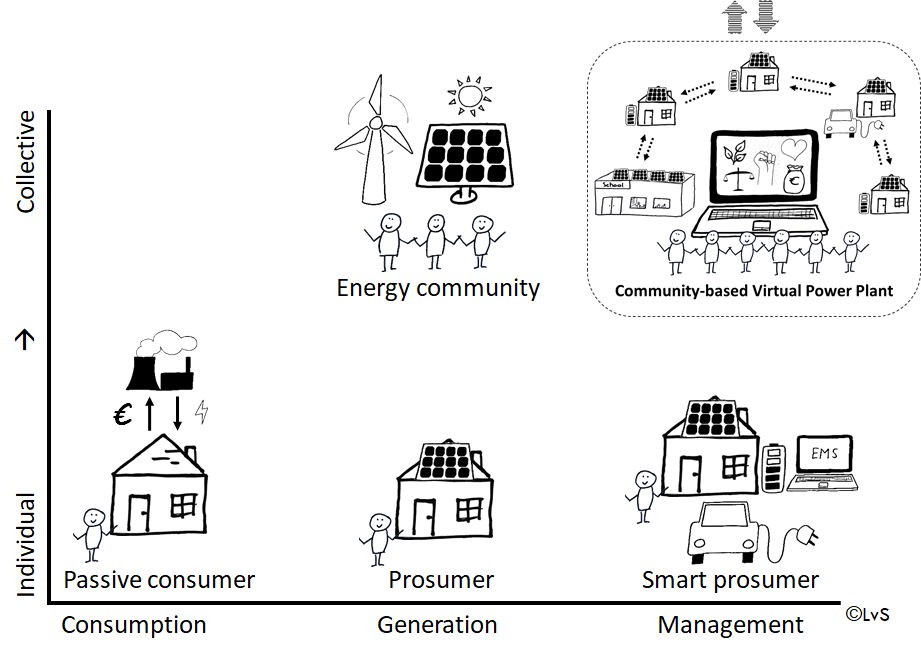Community-driven energy initiatives are seen as important drivers of the energy transition. So far, these initiatives focused mainly on energy generation and conservation. Recently, however, some initiatives started to adopt smart grid technologies like Virtual Power Plants (VPP) which enables them to become involved in the distribution, trading and management of energy. A novel model for energy provision arises: the community-based Virtual Power Plant (cVPP).
Three practical cases in Ireland, Belgium and the Netherlands highlight the diversity of cVPPs, that results from different choices and trade-offs made by various communities in diverse institutional contexts. Applying the cVPP conceptualization showed that the three cVPPs had to comply with the incumbent energy system, making it difficult to play the preferred roles in the energy system, operate on the scale of their community and to keep their own needs and values at the center.
Below you can find more information per case.
The rural cVPP - DPL (The Netherlands)
The story of the Dutch cVPP starts in 2013 in Loenen, a small rural village in the Province of Gelderland. In 2013, the village of Loenen won a sustainability competition, organized by the municipality of Appeldoorn, requiring solutions to make villages energy neutral. Winning this competition by introducing a revolving fund, was the start to implementing this solution in their own village. Already more than 300 projects with an investment value of close to 2 million euro's have been installed in the Loenen buildings (insulation, PV (166), Heat pumps, etc) thanks to this fund and more are to come. The ambition of the village is to use all rooftop capacity in Loenen for PV, and become selfsupporting. Yet, this strategy requires smart energy management and so the rural cVPP got initiated. Currently Loenen generates 50% of household demand with local PV.
The implementation of the cVPP is a bottom-up process, led by shared values and interests. These values were identified in Loenen through workshops and individual surveys. Read here more about the rural cVPP value proposition as a result of this.
Technically, the cVPP consists of close to 100 residential PV, 0,9 MWp industrial PV, several steerable heat pumps and an EV-charging point, all connected through a tailor-made Energy Management System (EMS). During the upscaling phase of the project, more residential and industrial PV, storage facilities and flexible assets will be added. More information on the technical architecture of the ‘rural’ cVPP can be found here.
More information on the rural cvpp can be found here:
The social cVPP - EnerGent (Belgium)
The story of the Belgian cVPP starts in Sint-Amandsberg-Dampoort, a residential, densely populated neighbourhood in the city of Ghent. Some people of this neighbourhood wanted to organize more solar energy locally, share it amongst each other and investigate the possibility of a neighbourhood battery to keep all produced energy locally. This led to the initiation of the project ‘Buurzame stroom’, which aimed to increase PV production in the neighbourhood, reach all kinds of target groups including socially vulnerable households and investigate solutions for smart electricity grids. It is within this neighbourhood that the cVPP is built. Because of the focus on social inclusion, this pilot project implements a ‘social cVPP’.
A cVPP is built by and for the neighbourhood. An important step in the cVPP implementation therefore consists of engaging the community and designing a cVPP according to the community’s values and needs. A community survey was conducted to identify these values. Discover here the social cVPP value proposition and how EnerGent aimed at including socially vulnerable target groups.
The technical architecture of the cVPP consists of 16 residential PV coupled to home batteries, 1 battery at SME level and 2 thermal storage units through hybrid heat pumps, all connected through an open-source Energy Management System (EMS). During the upscaling phase of the project, this architecture will be extended with additional heat pumps and other flexible assets. More information on the technical establishment of the cVPP and how the EMS has been developed, can be found here.
More information on the social cvpp can be found here:
- Slides: Summary of progress (June 2020). Watch the webinar as well (see events).
- Video kanaal Z: The impact of solar panels on the electricity grid
- Article Aldi: EnerGent puts solar panels on the roof of Aldi
The dispersed cVPP - Community Power (Ireland)
The Irish story starts in Co Tipperary at the Templederry Wind Farm, Ireland’s first community owned wind farm. This community project went through a process of partnerships with other community energy groups from the regions Tipperary, Limerick, Galway, Mayo and Dublin, all working on a sustainable energy future for Ireland, and led to the foundation of Community Power, Ireland’s first community owned electricity supplier. Community Power’s ambition is to increase on-site renewable generation, increase community owned renewable generation, smartly manage energy flows and support future communities to participate in building their own renewable energy solutions “by building a cVPP” across the country, i.e. a dispersed cVPP.
All decisions made by Community Power must reflect the values and needs as agreed by all partner groups. Therefore, interactive group sessions with community members were organised, leading to identification of five core principles: local benefit, clean energy, co-operative, fair prices and local resilience. Read here how these principles impacted the design and implementation of the dispersed cVPP.
An Energy Management System (EMS) with a dispersed architecture was developed and installed in domestic properties. The EMS allows smart control of heat pumps and batteries to optimize behind-the-meter energy flows and provide flexibility services to the national grid. During the upscaling phase of the project, new communities will be added to the dispersed cVPP and the number of connections to the EMS will be extended.
More information on the dispersed cvpp can be found here:


